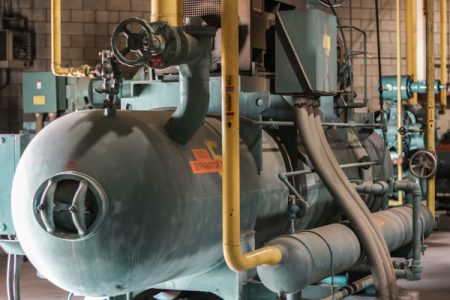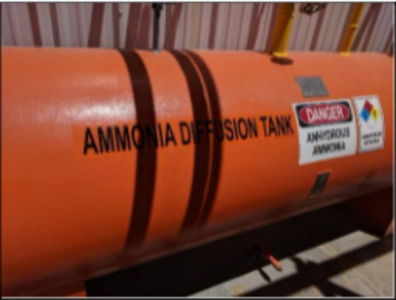Should I Hire a Contractor or Keep it In-House? | Part 6: Miscellaneous Maintenance

Eli Macha presented a technical paper at the 2021 RETA National Conference titled IIAR 6: Should I Hire a Contractor or Keep it In-House? This blog series includes excerpts from his technical paper.
Some facilities ask how much they can do in-house, while others want to outsource as much as possible. Before considering what personnel changes or contractor arrangements should be discussed, careful consideration should be made regarding common mechanical integrity tasks. While this is not an exhaustive list, facilities will have a solid direction for their program if they consider each subsequent topic.
Condenser Maintenance
Most facilities find they can handle condenser fan maintenance in-house. A simple fan shaft bearing lubrication or belt replacement job presents little risk if appropriate lockout/tagout measures are implemented. Over half of facilities rely completely on in-house personnel for these tasks and another 21% indicated they may assign this task to a contractor or in-house operator.
Another relatively safe, yet time consuming task, is cleaning the sump of the condenser. Given the simple nature of the task almost half of facilities indicated they only use in-house personnel for this task and another third of the facilities surveyed indicated the task may fall to employees or contracted technicians. Craig Nielsen, Director of Engineering for Producers Dairy, made an insightful comment about tasks of this nature: “Most facilities have the ability to do tower cleaning every year. It’s not that technical, it’s usually done on the off periods, but do most facilities do that? For most operators, there’s really not a desire to do that in-house.”
Purging Non-Condensables
Since it includes opening up a closed system, manually purging non-condensables is another high-risk activity. For this reason, 64% of facilities strictly rely on contractors to complete this activity. In lieu of manually purging non-condensables, the industry is moving toward auto-purgers. Even so, these units require occasional maintenance such as oil draining and cleaning the water bubbler. Two thirds of facilities with auto-purgers rely on contractors for their auto-purger maintenance.
Painting and Labeling
Maintaining an ammonia system requires perpetual painting. While just about anyone can pick up a paintbrush, ammonia systems require a little more know-how than other surfaces. Some pipes and equipment might need to be pumped down first. Painted nameplates have likely been the cause of thousands of headaches. Regardless, 57% of facilities keep this task in-house and another 29% either keep it in-house or hire it out.
Labeling pipes is another task where there is a little more than meets the eye. Anyone can figure out how to apply a sticker, but labeling a complex refrigeration system requires a solid understanding of refrigeration systems as well as how to read piping and instrumentation diagrams (P&IDs).
As purely anecdotal evidence, mislabeling equipment is quite common. One cold storage client believed their operator could apply equipment labels correctly, but the following was observed by the author during a site visit:

The high pressure receiver was labeled as the diffusion tank. To avoid mistakes like these, only one third of facilities keep piping and equipment labeling in-house.
The previous blogs in this series are available in the following links:
- Part 1: Introduction
- Part 2: Research Methodology
- Part 3: Completing Daily Rounds In-House
- Part 4: Outsourcing Annual Inspections
- Part 5: System Oversight

Leave a Reply